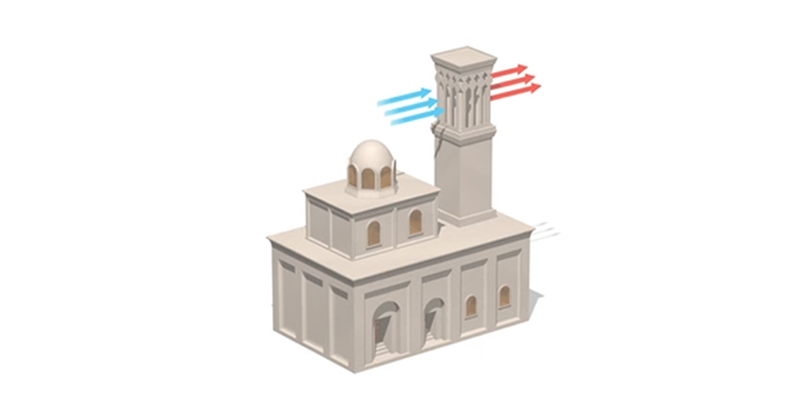When we think of air conditioning, we often imagine modern units and high-tech systems designed to keep our homes and workplaces cool. However, the quest to beat the heat isn’t a new phenomenon. The concept of air conditioning dates back to ancient civilizations, showcasing humanity’s ingenuity and long-standing desire for comfort. Let’s take a journey through time to explore the ancient roots of air conditioning and how early methods laid the groundwork for modern climate control.

Ancient Egypt: Cooling with Evaporation
The ancient Egyptians were among the first to employ evaporative cooling techniques. They would hang wet reeds in windows, allowing the hot air to pass through and cool via evaporation. This method is akin to today’s evaporative coolers or “swamp coolers.” In addition to this, Egyptian homes were built with thick walls and small windows to minimize heat gain from the sun, helping to keep interiors cooler during the scorching summer months.
Ancient Rome: Radiant Cooling and Aqueducts
Known for their engineering prowess, the Romans devised an early form of radiant cooling. Wealthy Romans had access to aqueducts that transported water from distant sources into cities. They ingeniously circulated this water through pipes embedded in the walls and floors of their homes, effectively lowering indoor temperatures. Roman homes often featured courtyards with fountains and pools, which not only added aesthetic beauty but also cooled the surrounding air through evaporation.
Persia (Modern-day Iran): Windcatchers and Natural Cooling
The Persians developed an architectural marvel known as the “badgir” or windcatcher. These structures were designed to capture the wind and direct it into buildings, often over a pool of water, to cool the air before it entered living spaces. This natural cooling method was highly effective and environmentally friendly, relying on the principles of airflow and evaporation.
China: Courtyards and Fans
Ancient Chinese architecture often included courtyards and water features that promoted natural cooling. Courtyards facilitated airflow, while water features added a cooling effect through evaporation. Additionally, the Chinese used fans made from feathers or silk to create airflow, providing much-needed relief from the heat.
The Environmental Friendliness of Ancient Methods
What stands out about these ancient cooling methods is their reliance on natural processes like evaporation and airflow. They were environmentally friendly long before the term “green technology” was coined. While these methods may not have been as effective as modern air conditioning systems, they provided significant relief from the heat and laid the groundwork for future innovations in climate control.
The ancient roots of air conditioning demonstrate humanity’s enduring quest for comfort and ingenuity in solving environmental challenges. From the wet reeds of Egypt and the radiant cooling of Rome to the windcatchers of Persia and the courtyards of China, these early methods paved the way for the advanced air conditioning technologies we enjoy today. So, the next time you relax in your cool, air-conditioned space, take a moment to appreciate the ancient innovations that made it all possible.




